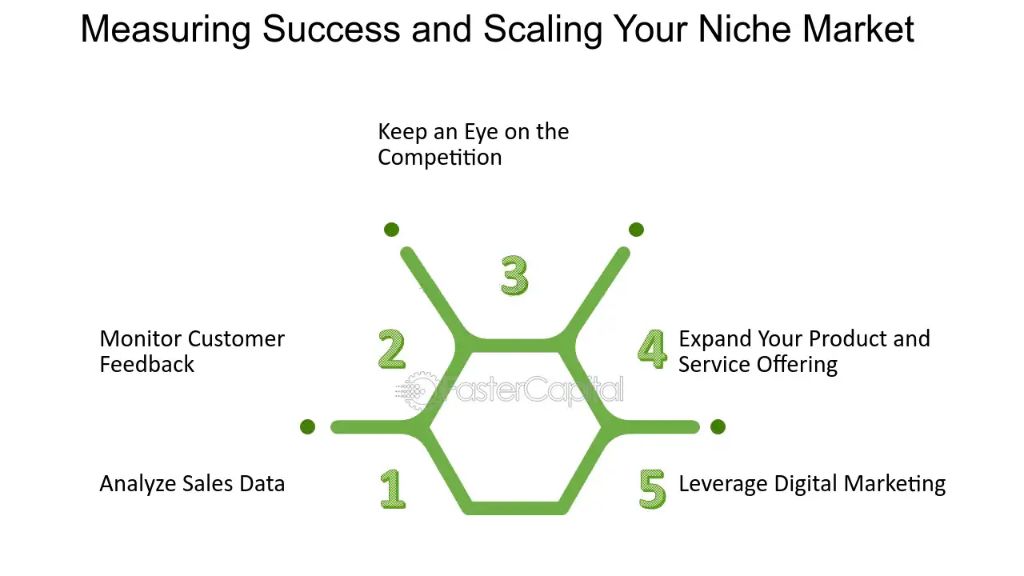Can You Make A Living Selling Pottery?
The art of making pottery has captivated humans for thousands of years. From ancient civilizations to modern hobbyists, shaping clay into beautiful and functional works of art produces a unique satisfaction. For talented potters, this gratification can turn into a full-time career. But can making and selling pottery really provide a stable living?
This article will examine the possibilities and challenges of pottery as a profession in the 21st century. We’ll look at the history of pottery as a business, pricing considerations, marketing strategies, and what it takes to truly make a living as a professional potter today. If exploring new careers or indulging artistic passions is of interest, read on.
History of Pottery as a Profession
The origins of pottery making as a trade date back over 20,000 years to ancient cultures in East Asia and the Near East. Archaeological evidence shows that pottery production began during the late Palaeolithic period in central and western Europe, where fired and unfired clay figurines and vessels were made starting around 29,000 BCE
Pottery making first emerged as an important trade during the Neolithic period starting around 10,000 BCE. Key early centers of pottery production include China, Japan, Ancient Egypt and Mesopotamia. The invention of the potter’s wheel around 6,500 BCE in Mesopotamia helped improve production efficiency and quality, advancing pottery making into a skilled trade.
Pottery making reached new heights as a profession during the Bronze Age around 3,500 BCE. Major pottery production centers thrived in ancient cultures like the Minoans on Crete, Mycenaean Greece, the Indus Valley civilization, and Shang Dynasty China. Distinct regional styles emerged, often exporting their wares widely across trade networks.
The ancient Greeks and Romans also developed sophisticated pottery industries. Major production centers like Corinth, Athens and Aegina in Greece produced fine pottery for domestic and export markets. The Roman Empire also relied on large-scale pottery production and trade across its provinces.
Modern Pottery as a Business
Pottery has evolved greatly over the last few decades, transitioning from primarily small handcrafted pieces to more production-oriented manufacturing. Today there is a diverse mix of independent potters creating unique artistic works alongside larger mass-market pottery companies churning out functional pieces on a broader scale.
According to the latest statistics from the Business Monitor for Pottery, the industry generates over $3 billion in revenue annually in the United States alone. Around 60% of pottery sales come from small independent artists and artisans, while the other 40% is from mass-market and giftware companies. The average pottery business makes between $50,000-$150,000 in annual sales depending on their focus and scale.
While some fear that mass-production techniques would hurt small pottery businesses, many independent artists have thrived by finding niche markets and selling their works at craft fairs, galleries, online stores, and through custom orders. Overall, pottery remains a dynamic and multi-faceted industry today.
Challenges of Selling Pottery
Selling pottery can be challenging in today’s market where mass-produced items dominate. According to https://www.greenbaypressgazette.com/story/money/2019/08/20/artists-online-face-challenges-marketing-and-selling/1870440001/, the industry is highly competitive and there is generally less demand for handmade pieces compared to mass-produced options.
As discussed on the Expert Clay podcast (https://expertclay.com/podcast/007-hardest-thing-potter-ceramic-artist/), it can be more difficult for art potters to make a well-designed and functioning artistic piece versus a non-artistic utilitarian pot. This makes marketing and selling their wares more challenging.
Potters also face difficulties marketing their work according to the unique nature of each handmade piece. They have to find ways to reach potential buyers who appreciate handcrafted items, while competing against cheaper mass-produced alternatives.
Keys to Making Pottery Profitable
There are several key strategies potters can use to maximize the profitability of their pottery business, according to experts. As noted in this Reddit thread, the most important factors are:
Specializing in niche markets – By focusing on a specific style or type of pottery like mugs, plates, or decorative pieces, potters can perfect their skills in that area and build a reputation. This article recommends finding a profitable niche with less competition.

Using online platforms successfully – Creating a shop on Etsy, Amazon Handmade, or a personal website can expand reach beyond local markets. Social media can also help potters showcase and sell their work.
Diversifying products and income streams – Avoid relying on pottery as the sole source of income. Offering workshops, teaching classes, selling tools/supplies, and making video tutorials are other potential revenue streams.
Pricing Considerations
Several factors go into determining the right price for handmade pottery pieces. Potters must consider the costs of materials, studio expenses, time spent making each piece, as well as what the market will reasonably bear. Setting prices too high can alienate customers, while pricing too low devalues the work and makes it hard to turn a profit.
Experts recommend analyzing similar pottery for sale to determine competitive pricing ranges. The size, complexity, materials, and uniqueness of the piece can justify charging more. Beautiful glazes, intricate details, or specialty clay may merit premium pricing. Standard bowl or mug shapes tend to sell for less. Wholesale prices to shops or galleries are typically marked down 30-50% lower than direct retail prices.
To calculate a profitable price, tally all costs related to producing the piece, including clay, glazes, studio overhead, firing, and hours spent making it. Then multiply the costs by 2-4x to build in reasonable profit margin. Track inventory and sales data over time, adjusting prices up or down until reaching an optimal balance of good value and healthy profits.
Setting prices too low devalues the potter’s time and undercuts the market. Gradually raising prices for return customers can be an effective strategy as reputation grows. Potters should convey the quality and care that go into their work through pricing, presentation, and marketing.
Sources:
https://expertclay.com/podcast/015-price-pots/
https://www.oldforgecreations.co.uk/blog/pricing-your-pottery
Best Practices for Marketing
When it comes to selling pottery, having a strong marketing strategy is essential. Here are some best practices for marketing your pottery business both online and in-person:
Online and social media marketing have become incredibly important for reaching potential customers. Having accounts on platforms like Instagram, Facebook, and Etsy allows you to showcase your latest creations and build an audience. Make sure to post high-quality photos, engage with followers, promote your online shop, and run targeted ads. Using promotional tools like coupons and giveaways can also help drive traffic and sales.
In-person marketing at local craft fairs, galleries, and markets is also beneficial. Setting up an attractive, eye-catching booth allows customers to see and feel your work in person. Having business cards, brochures, or postcards with branding, pricing, and ordering information available can capture sales after the event. Participating in local art walks or charity events also gets your work in front of new audiences.
No matter what marketing methods you use, maintaining a consistent brand and professional image is key. Having a logo, color palette, and unified style will make your business stand out and look polished. A clean online shop, social media presence, packaging, and in-person displays aligned with your branding make a great impression on customers and help convert sales.
Sources:
https://pagegenie.ai/blog/handmade-pottery-mug-manufacturing/
https://www.lemon8-app.com/discover/marketing%20handmade%20pottery%20online?region=us
Building a Customer Base
Getting return customers is key for potters trying to build a sustainable business. Offering incentives like free or discounted shipping can be an effective loyalty program to encourage repeat purchases (https://shipscience.com/8-ways-to-boost-customer-loyalty-for-your-glass-and-ceramics-businesses-through-shipping/). Potters can also build meaningful relationships with customers by offering custom orders and hands-on classes or workshops. Interacting directly with customers creates an emotional connection and makes them more likely to come back.
According to research, implementing a customer loyalty program is one of the most effective strategies to increase sales and profitability for pottery businesses (https://finmodelslab.com/blogs/sales-strategy/pottery-sales-profit-strategy). The easiest way to boost loyalty is to focus on providing an excellent shipping experience. Fast, reliable delivery with tracking information and premium packaging makes customers feel valued (https://shipscience.com/the-easiest-way-to-boost-customer-loyalty-for-your-glass-and-ceramics-businesses-through-shipping/).
Making a Full-Time Living
When it comes to making a full-time living solely from pottery and ceramic arts, the income potential ranges widely. According to self-reported income from over 300 potters on sites like Reddit and Quora, most full-time potters earn between $25,000-$50,000 per year from their craft. However, experienced potters who have built a strong brand and loyal customer base can earn $60,000-$100,000 or more. Location also impacts earning potential, with potters based in thriving art markets like New York, San Francisco, and Santa Fe on the higher end.
Some keys to earning a higher income include: building an engaged social media following and email list to sell work directly to collectors; selling at high-end art fairs and markets; offering workshops and classes; securing commissions and wholesale deals; having exceptional skills and unique niche products; and pricing work commensurate with expertise. Many full-time potters also live simply and frugally to make their irregular art income sustainable.
In terms of lifestyle considerations, being a full-time potter allows for a flexible schedule and the passion of doing creative work full-time. However, it often means long hours alone in the studio. The income stream can be unpredictable based on seasonal fluctuations, art fair cancellations, wholesale deals falling through, etc. Building a customer base takes years of persistence, so financial stability doesn’t happen immediately. Overall, full-time pottery provides the ultimate artistic freedom for those willing to spend years perfecting their craft and business skills.
Conclusion
Making a full-time living as a potter is certainly possible, but requires passion, persistence, business savvy, and a commitment to continual learning and improvement. Key points to remember include: mastering your craft takes time and practice; build an audience and customer base through social media, local markets, and partnerships; price work fairly based on costs and perceived value; reinvest profits to grow studio space and equipment; collaborate with other artists for inspiration and support; adapt to emerging trends while staying true to your own style and vision. With dedication and smart choices, many potters successfully earn a consistent income from selling their ceramic creations.
Pottery can absolutely provide a fulfilling and financially stable career for those willing to put in the work. It is deeply rewarding to make a living doing something you love. While there are challenges to running an art business, the freedom and flexibility of being your own boss is hugely appealing for many. With some business knowledge, creativity, and persistence, it’s possible to sell your pottery, support yourself, and make your passion your profession.


